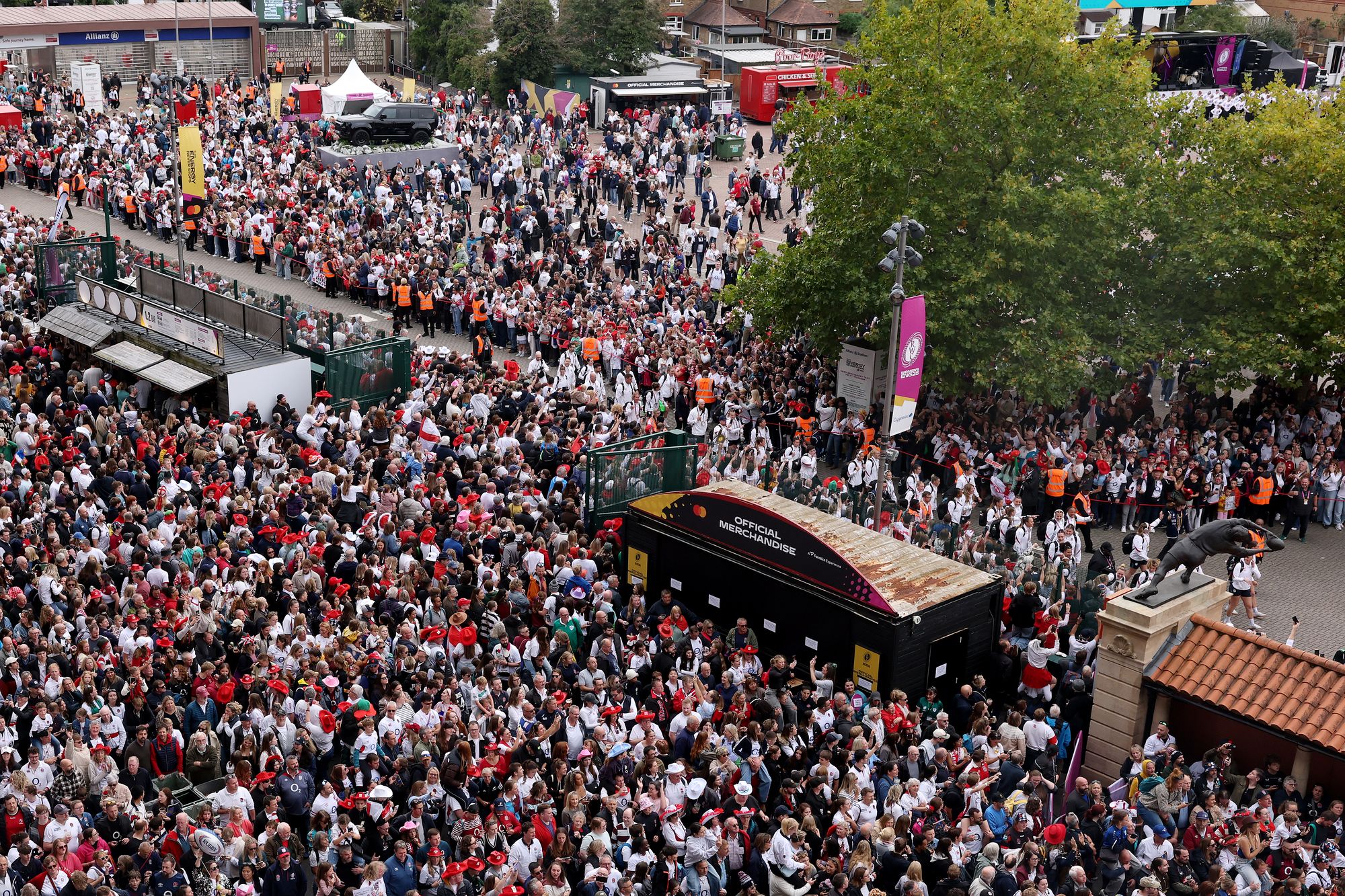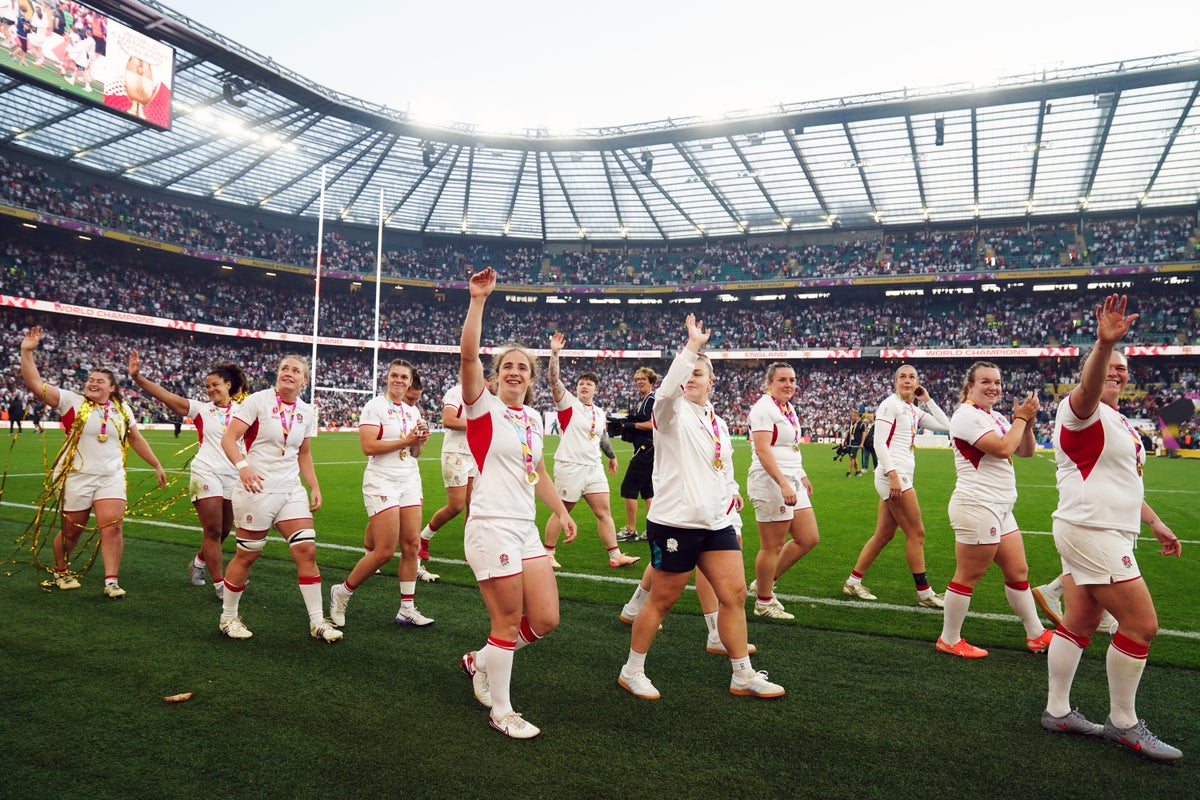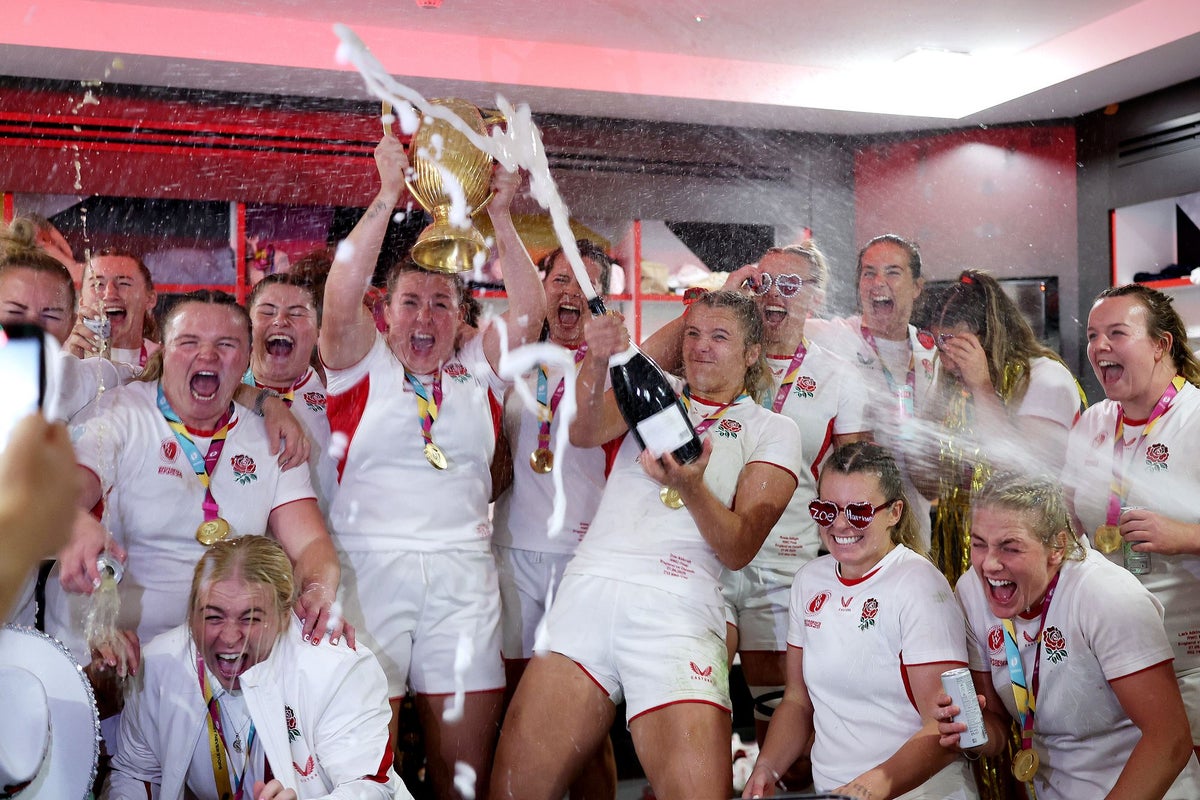As Zoe Aldcroft hoisted the Women’s World Cup high into the Twickenham air, England’s towering captain looked around and could hardly believe her eyes. It had been a day of disbelief from start to finish, the Red Roses not quite sure how to process the party that they had created. Afterwards, the players spoke of struggling to hold their emotions in check as they saw thousands upon thousands of fans fighting for space on the balconies all the way up the Twickenham tiers, clawing and clambering to the front as they craved a look at their heroes.
“The most emotional part was stepping off of the bus and seeing the amount of people in the stands and I was like ‘oh my goodness this is it’,” Aldcroft beamed. “Coming out to 82,000 people it was unbelievable. You could hear them supporting us throughout the whole game.”

By the time the redesigned trophy was in Aldcroft’s hands, there had been plenty of post-match pomp and ceremony as individual gongs were distributed but nary a single seat had been vacated. Head coach John Mitchell and his side had spoken repeatedly of what it would mean to fill the green seats of the grand old ground and, with ambition fulfilled, they were not going to empty quickly as the revelry began.
“It was actually insane,” hooker Amy Cokayne gushed, shortly before Hannah Botterman poured a beer down her back to throw her off her speaking stride. “When they told us three years ago that the aim was to sell out Twickenham, we all laughed in the meeting. For it to be pulled off, and get that many people was amazing.”

It really was a special day for the sport, to cap a transformative tournament. The ambition set by the organisers, and England’s Rugby Football Union (RFU) long beforehand, had been high, a huge jump from the record previous crowd of 58,498 to a capacity crowd, but for months and months there had been little doubt that they would achieve their goal – provided, of course, that the players took care of their business and made it to the final.
That, equally, perhaps should not have been doubted. The Red Roses were clear that they had saved their best for last, finally finding the sort of dominant performance that they had lacked at times in the World Cup to blow Canada away. It was a tour de force forged on set-piece strength, particularly at the scrum, where England contorted Canadian bodies every which way to turn the screw. Tactically, they were excellent, too, going to a contestable kicking game and not affording Canada stable platforms – Mitchell reflected afterwards that he had felt that the runners-up had rather been allowed to strut their stuff too often by opposition during the tournament. Around the corner, where Canada had been so impactful in making dents, England were super physical, illustrating the difference between they and other sides.

Which perhaps speaks to a vital next step for the women’s game. The decider, like England’s semi-final success over France, was perhaps more closely contested than it appears – Canada knocking on five metres from the line while Botterman was still in the sin bin was a huge moment – yet only a few times did they appear properly in peril. Their near misses in the last two finals had created a degree of doubt and debate over whether the Red Roses could handle the big stage but they rose to the occasion, again leaving the rest trailing in their wake.
The £15m a year that the RFU now invests in the women’s game is far more than that of their rivals; a day like Saturday at Twickenham perhaps proves it worth it. At the grassroots level, no doubt a World Cup win could drive fresh interest and start journeys for the Red Roses of the future – the talent pool from which international women’s rugby players are picked remains relatively small. To that end, the development of Premiership Women’s Rugby (PWR) into the world’s leading domestic league has aided others as well as England, but the strength in depth it gives Mitchell and his staff means that a second-string side could have contended at this tournament.

“I love seeing 100 English girls playing in PWR, and I’d love to see more,” the head coach said. “The league is a great competition because we are playing against other world-class opposition, but we’ve got to be mindful that we’ve got to grow English players. If you look at the 32 players that have accomplished greatness, to me it has only come because of the depth we’ve created and we have to make sure the pathway is enhanced even further as a result of this performance. We can dominate the world for a long time – but the world is going to get better.”
No doubt, there are some who fear this win could catalyse England to even greater success. Their dominance is more of a concern for the Women’s Six Nations rather than the World Cup, and has not yet proven to be an inhibiter on crowds, but it is surely incumbent upon their rivals to now invest more heavily to try to stay with them and create more compelling contests. Much has been said about Canada’s crowdfunding to try and win the tournament, but perhaps not enough of how they have boxed clever to attempt to mix it with the heavyweights. With smart coaching, huge buy-in from squad and union and a sprinkling of world-class players, it shows even a little more investment can go a long way.
Take, too, South Africa, who have an array of athletes to suggest rapid growth in the coming years, and Australia, to whom the baton is now passed as hosts of the next World Cup. They have the benefit of being established men’s rugby powerhouses – while the USA do not, World Rugby are desperate to unlock that audience and believe they can perhaps fill a gap in a slightly saturated market by providing a highly-physical female professional sport with no women’s NFL equivalent. These will be crucial years.
Closer to home, news of Scotland’s revamped contractual structure is welcome, though the process to get to this point and exact nature of the new deals has clearly caused problems. Talent regeneration is a concern; Wales are feeling that. Of the home nations, Ireland feel closest to breaking into the top tier after their own struggles of a couple of years ago.
But the pace-setters and ceiling-breakers will remain England for a long while. As 32 became 33 on Saturday evening and the unbeaten run went on, it was wondered what we will talk about if their dominance continues with the World Cup hoodoo banished. Perhaps it is to simply recognise a great team enjoying the sort of stage they deserved in front of an adoring, ever-swelling public – let us hope the others catch up in time but for now there is plenty to celebrate about England’s success.



